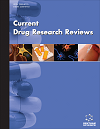
Full text loading...

Argemone mexicana, commonly known as the Mexican poppy, has earned significant recognition in the traditional healing systems of the Eastern Indian region, where it has been used for centuries as a folk remedy for a variety of diseases. The study was based on search or identified through Pubmed, Google Scholar, Science Direct, etc.
Phytochemical analysis has demonstrated that the alkaloids present in A. mexicana exhibit potent antimicrobial properties, making the plant an effective natural remedy for treating infections caused by bacteria, fungi, and viruses. In addition, the plant’s flavonoids and phenolic compounds are recognized for their strong anti-inflammatory and antioxidant activities, which play a crucial role in alleviating pain, reducing inflammation, and promoting tissue repair. Furthermore, A. mexicana has shown significant analgesic effects, which support its traditional use as a pain reliever. The integration of ethnobotanical knowledge with modern pharmacological research is essential for fully unlocking the therapeutic potential of A. mexicana.
Future studies must focus on comprehensive clinical trials, toxicological evaluations, and in-depth mechanistic investigations to validate the efficacy and safety of A. mexicana in human populations.
This review highlights the urgent need for further research to bridge the gap between traditional knowledge and contemporary scientific understanding. By advancing the study of A. mexicana, there is a significant opportunity to develop novel, cost-effective, and sustainable therapeutic agents that could serve as alternatives to synthetic drugs, particularly in regions where access to modern healthcare is limited.

Article metrics loading...

Full text loading...
References


Data & Media loading...